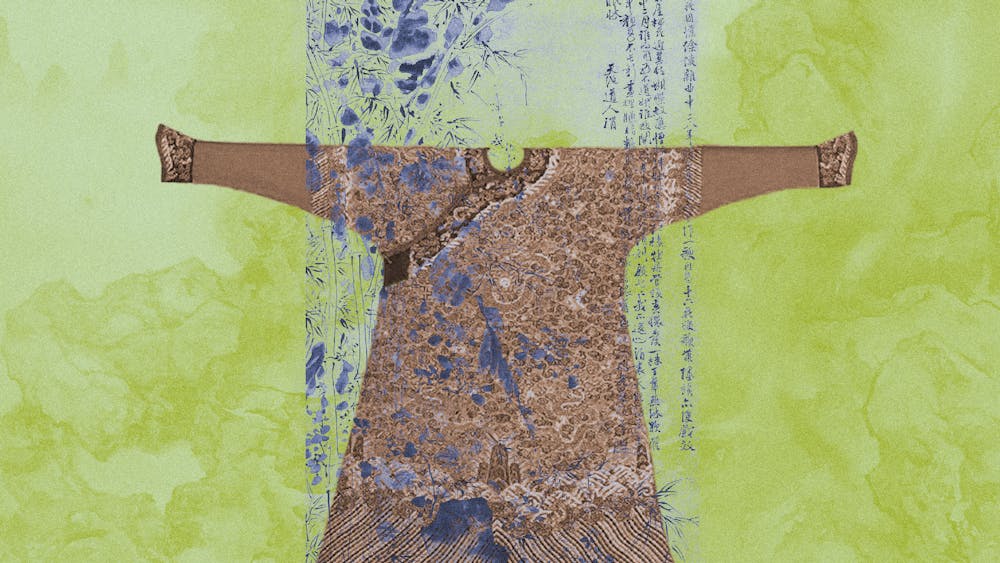Oneness: Nature & Connectivity in Chinese Art is bringing the Chinese artistic tradition and landscape to Benjamin Franklin Parkway. Containing works by four prominent contemporary Chinese artists, the show tackles the intersections between humanism and environmentalism. It creates a continuous dialogue through the timeline of Chinese art, placing works like a 16th–century hanging scroll and Emperor’s Dragon Robe (Mang Pao) (c. 1840) alongside modern sculpture and ink paintings. For those looking to journey across the globe and through history, look no further than this immersive exhibition at the Philadelphia Museum of Art.
Located in Galleries 321, 326, and 334 of the PMA, the special exhibition will remain on view through June 2023. It was made possible by The Robert H. N. Ho Family Foundation Global. The show features the works of four different artists, each of whom contribute to the progression of the Chinese art historical tradition in their chosen manner and medium.

Versatile and creative, Bingyi works with ink, land, performance, and digital art. She is most known for her mountain–and–river landscapes, including The Eyes of Chaos: Remaking the Song Palace (2021–2022), which can be viewed in the Chinese Reception Hall. This piece surrounds the viewer on three sides with rhythmic line work and effortlessly fluid ink. Her other projects have a similar expansive quality: Her famous “ink bomb,” commissioned by the Shenzhen Bao’an Airport, was created by dropping 20–kilogram oil and ink “missiles” on huge canvases from various heights in a helicopter.
Tai Xiangzhou presents a more studied, historical approach to the Chinese landscape through his ink paintings on silk, with heavy inspiration from the art–making process of China’s tenth to 14th centuries. In his Fanghu Isle of the Immortals (2021), Xiangzhou uses Qing–Dynasty–era ink to explore nature, which he describes “as an unknowable force in the midst of constant movement.” Tackling themes like philosophy and cosmology, the work is inspired by a stony, desert environment near the artist’s home on the Mongolian plateau. Fanghu Isle of Immortals is immaterial and transcendental; Xiangzhou explains, “In our world, there is, in fact, no intrinsic materiality. There is gas, liquid, and solid all in constant flux.”

For the next artist, called Ming Fay, engagement with nature takes a more unorthodox form. In Money Tree Garden, Hybrid plants and Fruit (1984–2022), Fay composes a garden, including cherries, a pagoda plant, and other assorted plants, at an uncharacteristically large scale. These oversized sculptures push viewers to confront our relationships with the natural world. Fay’s nature installations are imbued with cultural references and concepts that harken back to his experiences across the globe: He was born in Shanghai, grew up in Hong Kong, and came to teach in the United States in 1961.
Leaning Pine (2017) by Wang Mansheng demonstrates this fourth artist’s renowned talent in ink painting and calligraphy. Since moving from China to New York in 1996, Mansheng has worked on translating his natural surroundings, like the pine tree, into the language of Chinese landscape tradition. In these ink paintings, he fuses language with visual and tradition with contemporaneity. Mansheng discusses one of his works in the exhibition called Tiger and Deer Drinking Together (2022), a scroll decorated by blooming magnolia flowers painted with black walnut ink the artist made himself. Regarding this work, he poses a thematic question: “The tiger is very fierce, but the deer is very gentle. Could they drink together from the same waterhole? I was thinking, in the Buddhist world, people talk about the pure land. It is beautiful and peaceful. Only in that kind of environment could [this] happen.”

Complementing the museum’s already expansive collection of Chinese works of art, Oneness creates conversation about the human relationship to our surrounding environment from four distinctive perspectives. While the exhibition may feature the work of contemporary artists, it is an unmissable glimpse into the artistic past of Chinese art history.







